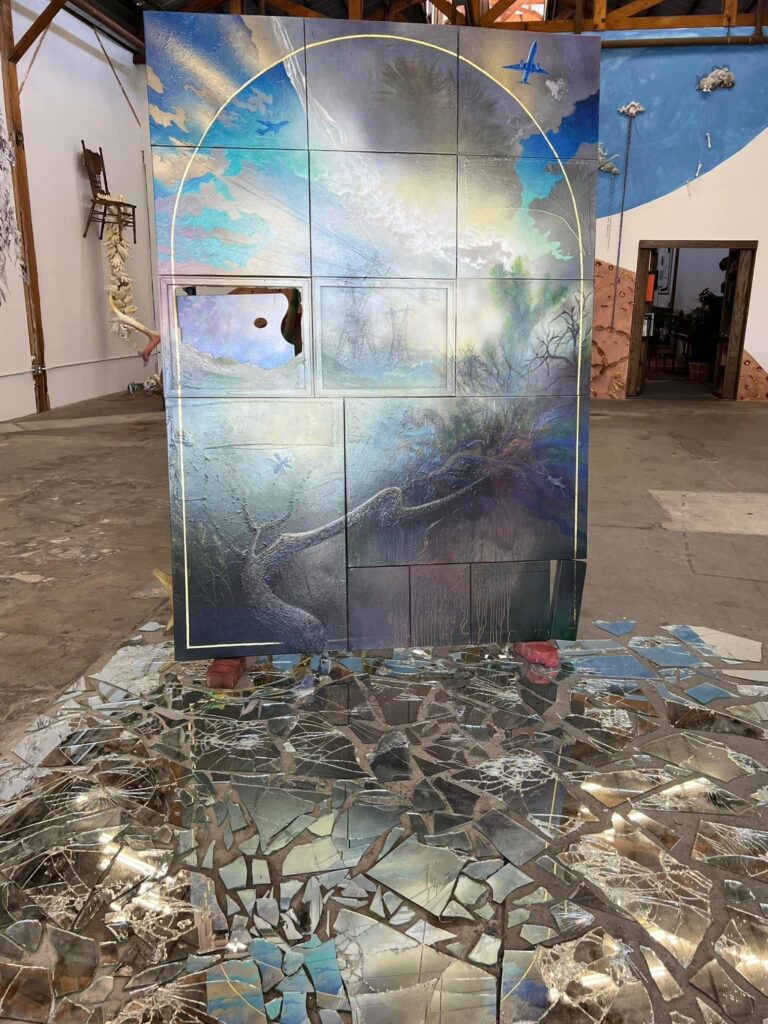
There is both the mystic and the mythic in Where Earth Becomes Aether, curated by Jason Jenn and Vojislav Radovanovic now at Wonzimer in DTLA through June 30th. Viewing this immersive show is a spiritual experience, both literally revealing the Zen-like soul of the art, and in its cathedral-like presentation.
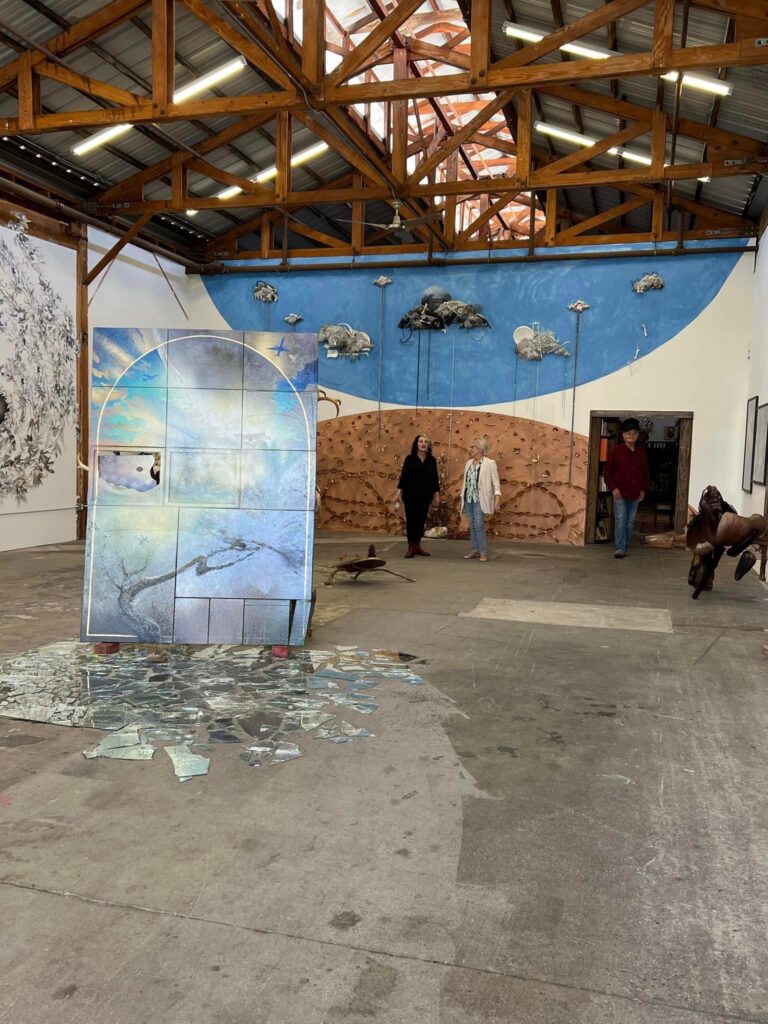
The gallery’s soaring walls and ceiling create the exhibition’s own canvas, and the curators and artists have worked together to create many site-specific pieces that shape the space into a true church of awe-inducing art.
The group exhibition of 13 artists include works from both Radovanovic and Jenn, as well as Marthe Aponte, Francesca Bifulco, Adrienne DeVine, David Hollen, Aline Mare, Rosalyn Myles, Catherine Ruane, Nancy Kay Turner, Cheyann Washington, Christine Weir, and Sean Yang.
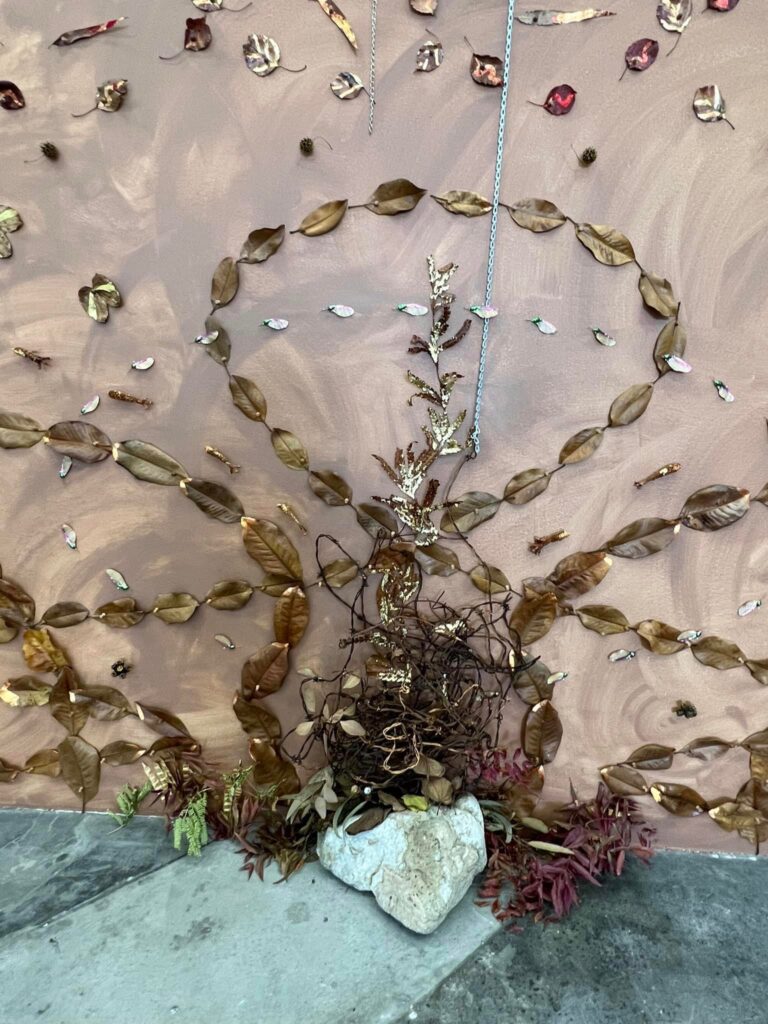
Thematically, the art looks at the “elemental nature of art making, constructed by earthy resources and inspired by ethereal ideas.”
The artists use everything from paper to plants, rock, metal, and clay, inviting viewers to enter a space that the curators describe as both “physical and emotional, the ephemeral and eternal, and the material and immaterial.” Aether refers to a divine substance, one that according to ancient Greeks, served as a connector between the earthly and the celestial. In short, the exhibition is one every bit as sacred and ethereal as its intent.
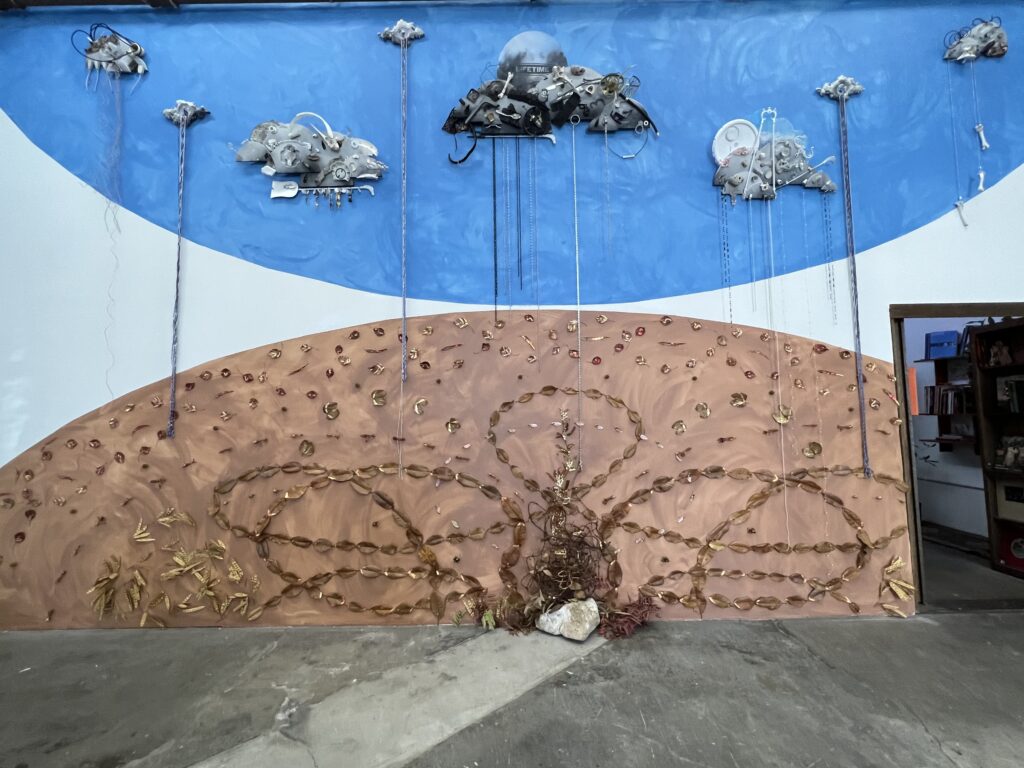
The viewer’s eye is immediately drawn to the backwall of the gallery, whose height is often overpowering in other exhibitions. Here, it’s fully utilized by co-curator Jason Jenn. Mixed media and acrylic paint are the materials used for “Interconnected: the Sky Serenades, the Earth Dances,” a site-specific installation available for re-creation. Blue above and brown below, the serendipitous combination reveals both sky and ground, with elements that include a swirl of gilded metallic leaves, bones, and rock.
The piece is the physical backdrop and backbone of the exhibition, leading beautifully to works on either side of it and in the center of the gallery, where curatorial counterpart Vojislav Radovanović’s work serves as the exhibition’s all seeing if splintered eye.
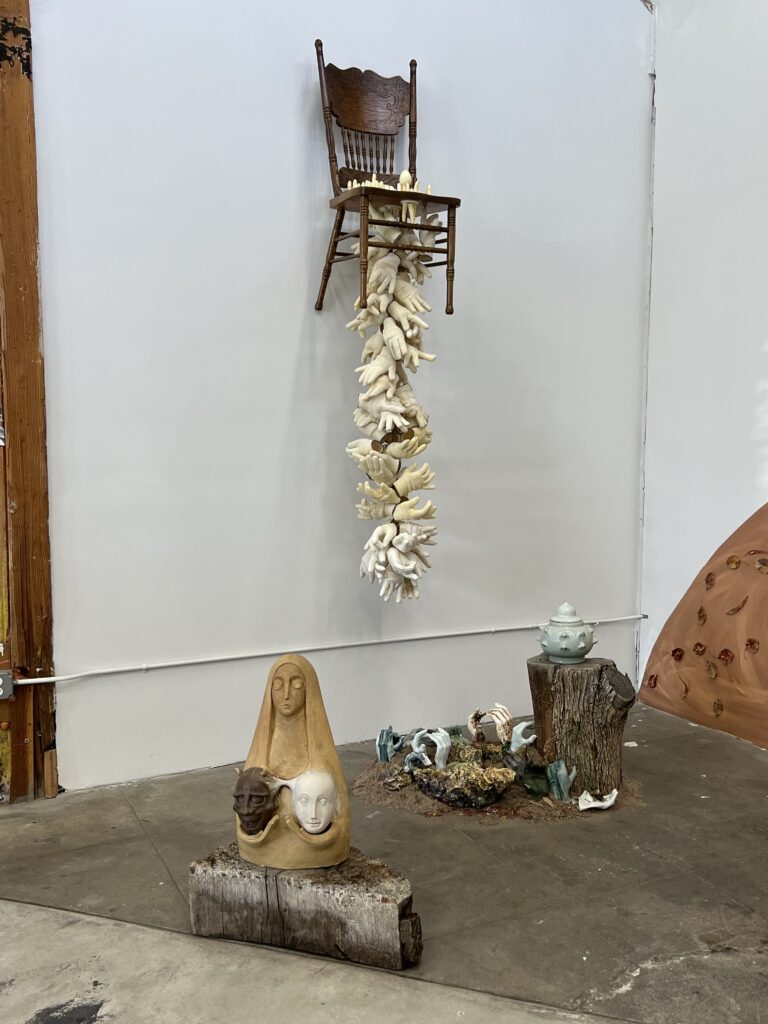
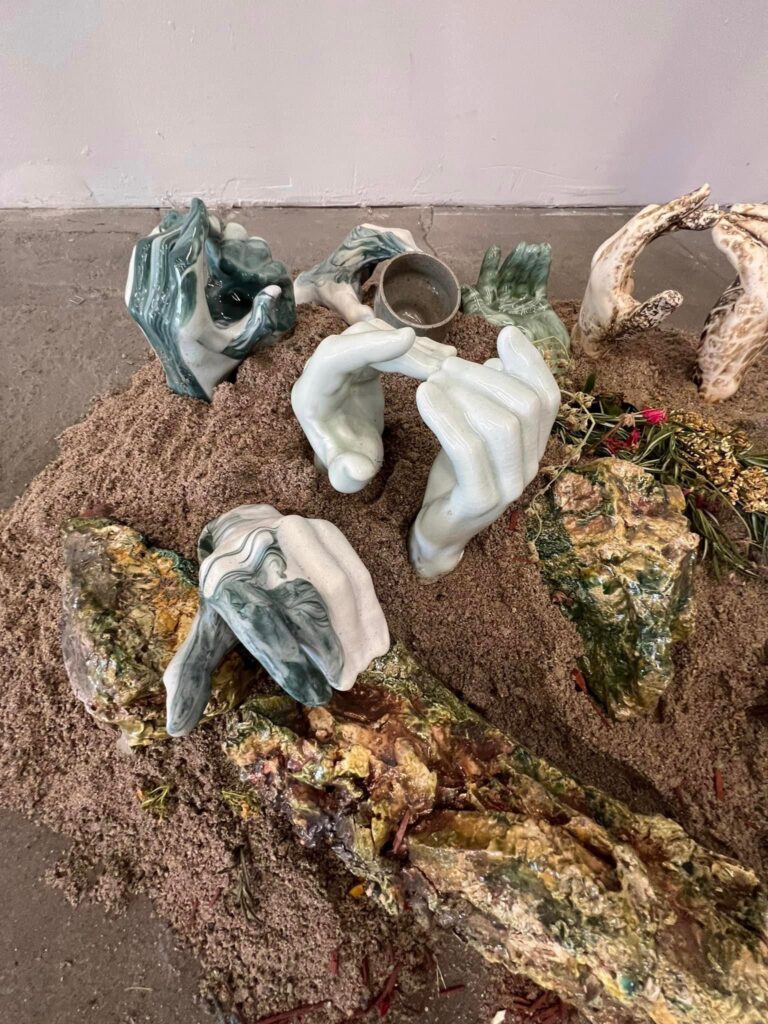
To the left, some pieces mounted in soft dirt, are the lustrous ceramic and clay works of Sean Yang. There are four separate installations: “Filial Piety,” gives us resin cast gloves forming a kind of lei, draped off a wall-mounted chair; in pale sea green “Four Noble Truths” and “Noble Eight Fold Path,” are a perfect poem of ceramic and porcelain; while hands in a variety of oceanic shades protrude from the aforementioned soil display in Earthly Delight, an installation that contains ceramics, porcelain, and raku glazes. With a Madonna-like bearing, a female form contains two heads, one devilish, one peaceful in “Hanya,” which uses ceramics, Nara porcelain and metal oxides in its creation.
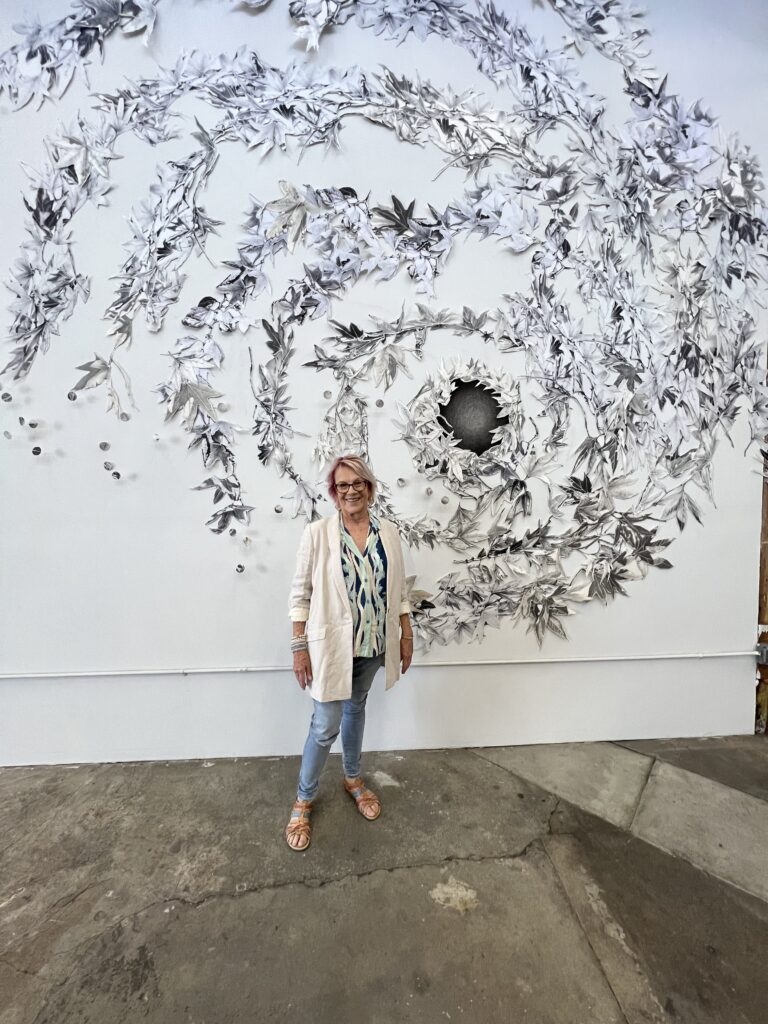
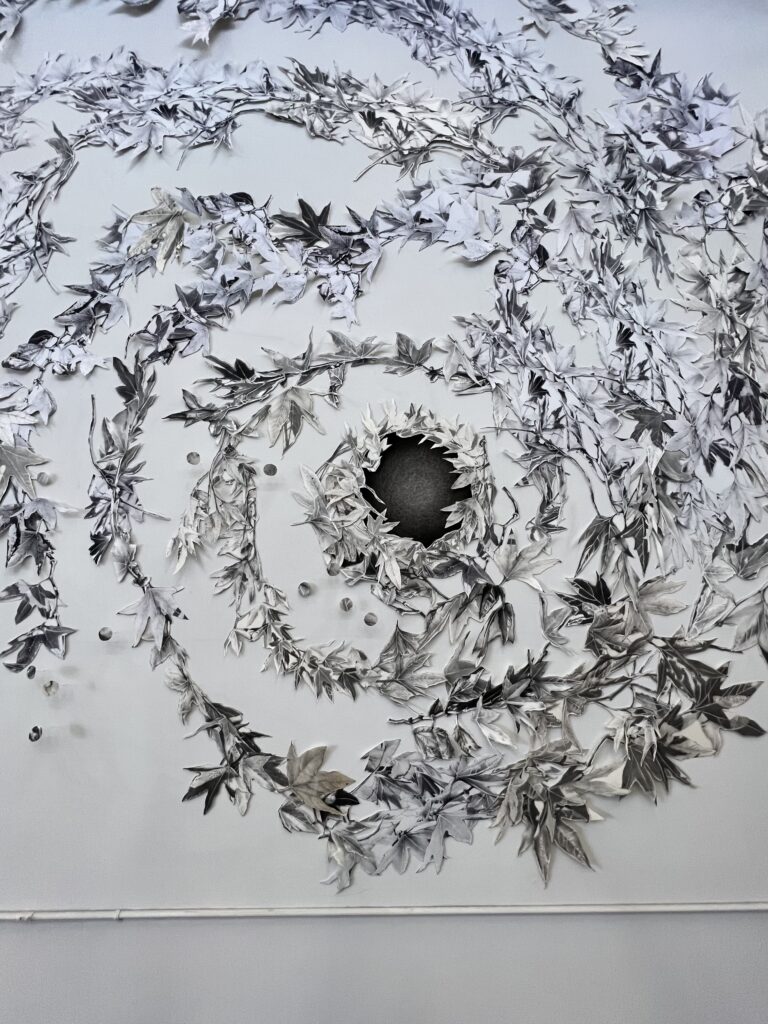
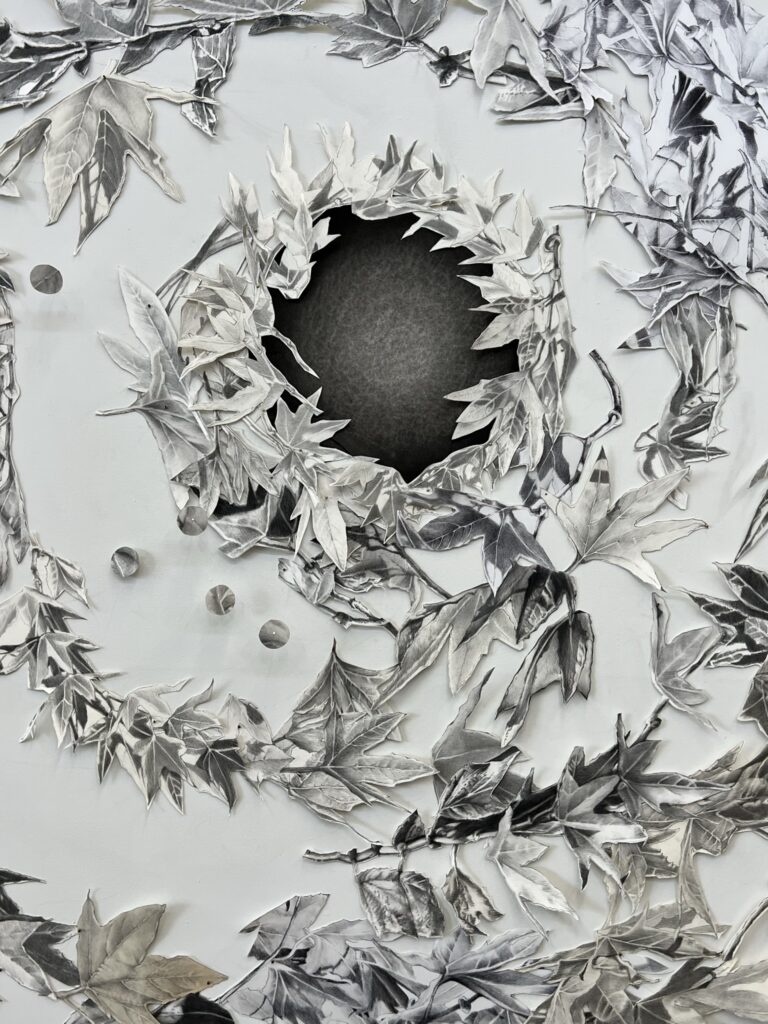
Rising just beside Yang’s work, and powerfully linked to Jenn’s in its swirl of leaves,is a virtuoso work from Catherine Ruane. Her vast “Vortex” encircles what appears to be the inside of a tree stump, or perhaps a magical black hole. Graphite, charcoal, white paint, and photo collage on rag paper make up this magnificent and vast profundity of delicately constructed black and white leaves. It is a tree in a snowstorm, a tree from Heaven, a cyclonic force as seen from above, embracing and encompassing. Here, Ruane’s work glows with the opalescence of her white paint, the delicacy of her leaves and her visceral accuracy of form, incandescent with a contained life force.
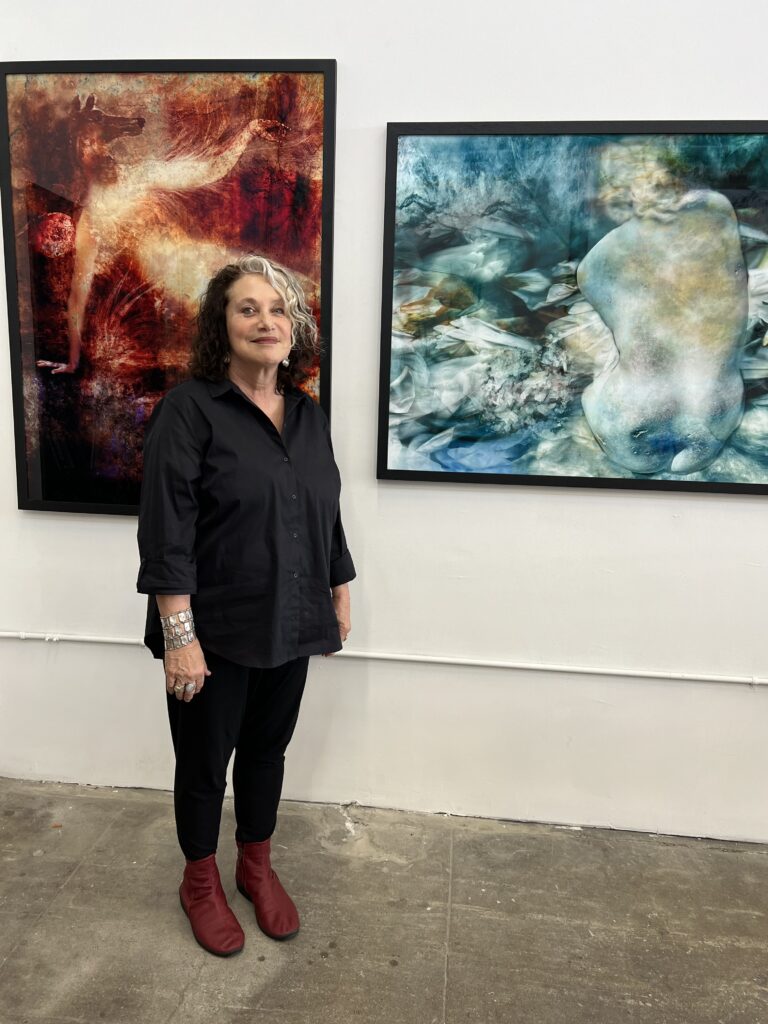
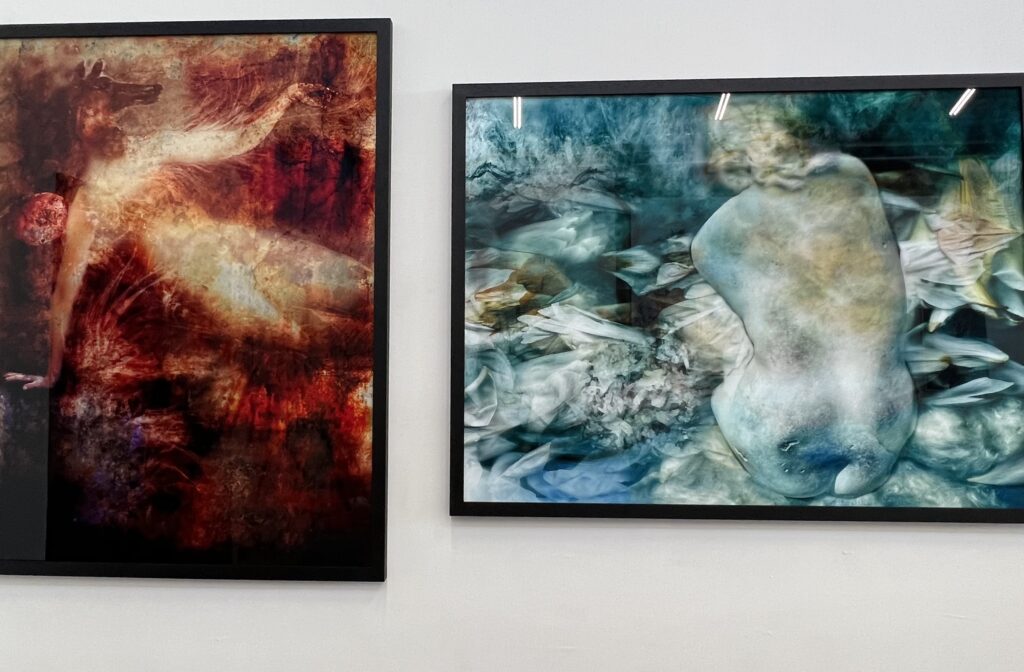
To the right of Jenn’s back-wall work, there are two delicate, ephemeral, fairy-like female figures rising within Aline Mare’s photographic works printed on glass. There is the luminous female form contained within the autumnal colors of “Anubis Head,” and the meltingly green and white fecundity of “Butter.” These beautiful works are as soul-soothing as they are slightly witchy, a heady brew.
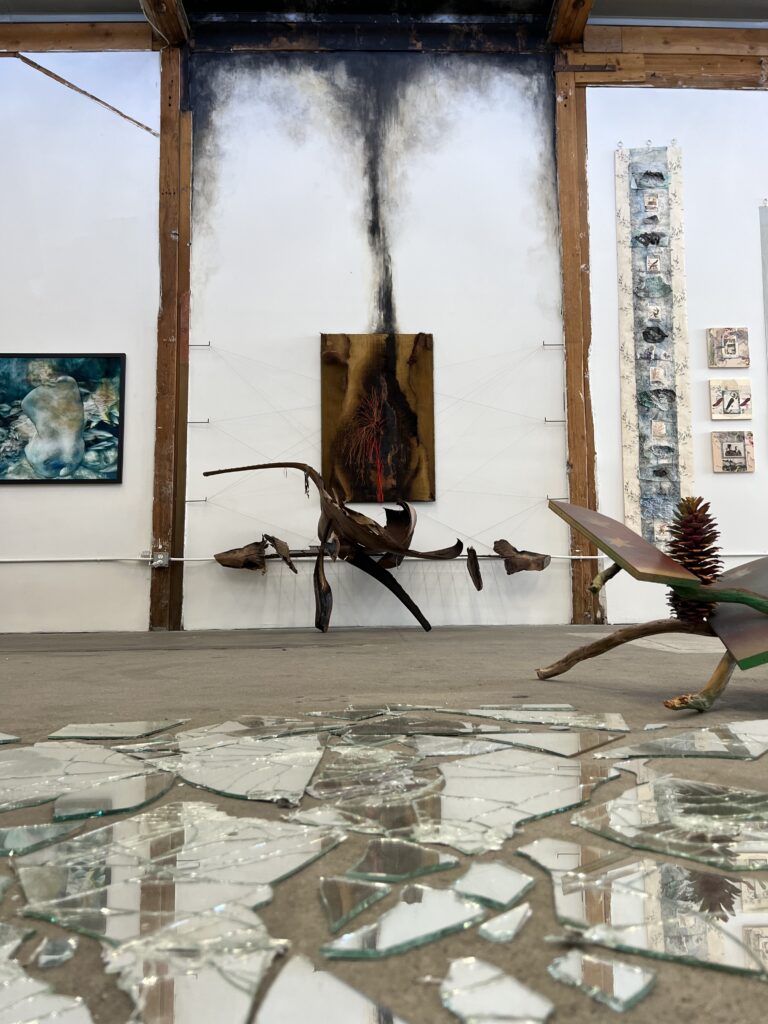
Next to it is a tornado of site-specific smoke curling upward like a magician’s experiment from the curved natural sculptural forms created by Francesca Bifulco in “Wound Over the New Ground. ” Here, burnt burlap and wood with hand-stitched cotton thread is used along with a found palm frond and custom-built metal climbing spikes. It is plant and fire, smoke creature arisen from a jungle detritus, magnificent and fearsome.
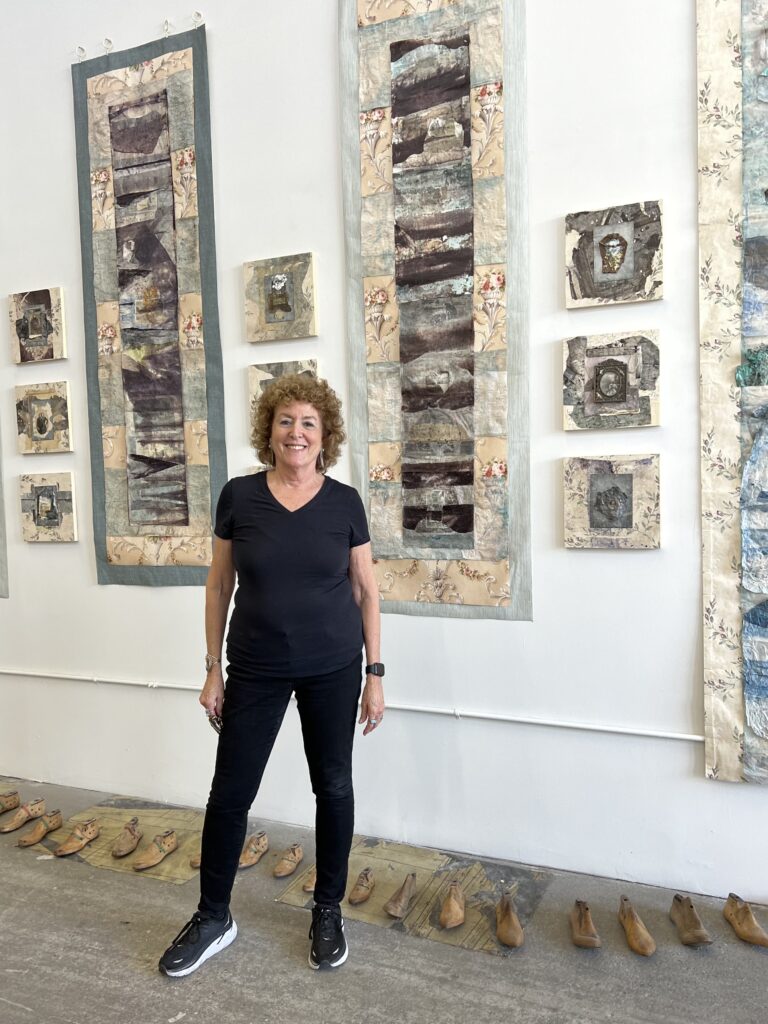
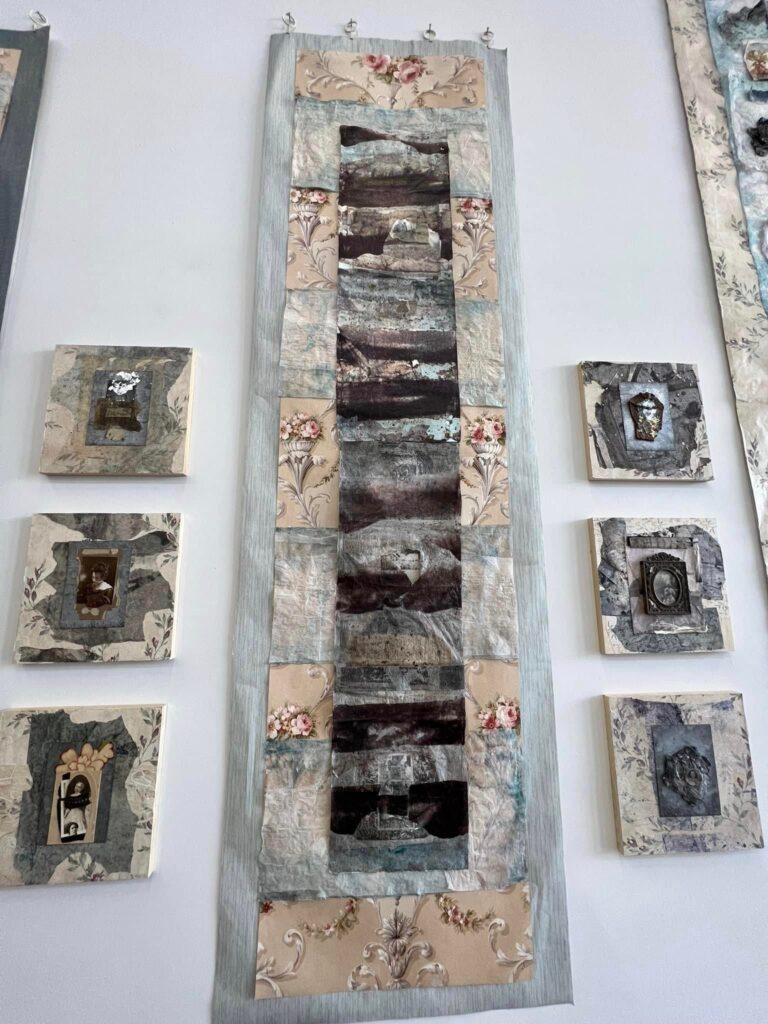
Next to her piece is a series of conjoined and delicate works from Nancy Kay Turner, “Lethe: River of Forgetting.” Despite the title, her mixed media on parchment scrolls are not only memorable but evoke the idea of memory, as does her “Ghosts and Unintended Consquences Series,” offering mixed media including found photographs on wood panel. At the base of both series, which form a primarily blue, white, and brown nexus on the center wall, is “Pilgrimage,” 28 vintage wooded shoe lasts which evoke the fallen or the forgotten. It is a haunting, massive series of works that fits together like pieces of the same, heart-rending puzzle.
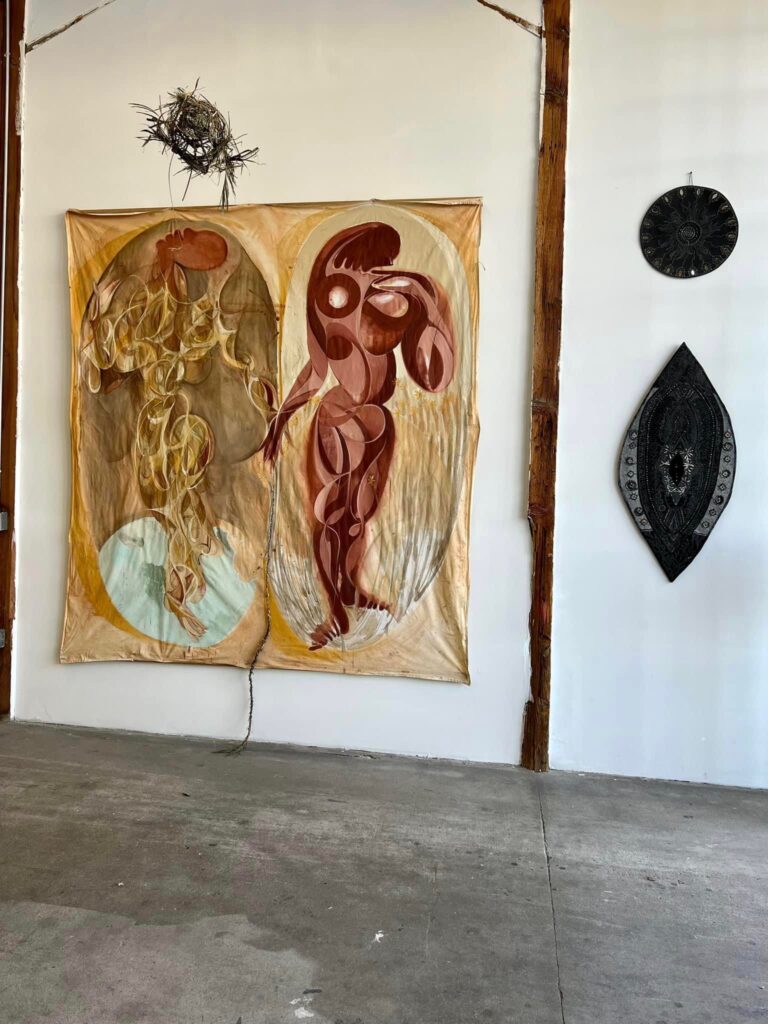
Cheyann Washington’s “Conjunction” creates the appearance of human figures arisen from the earth or sky. Using natural mineral pigments on oak-mounted fabric and an extension rope of woven dried plant material, she seems to be shaping her own Adam and Eve with sweeping, strange, grace.
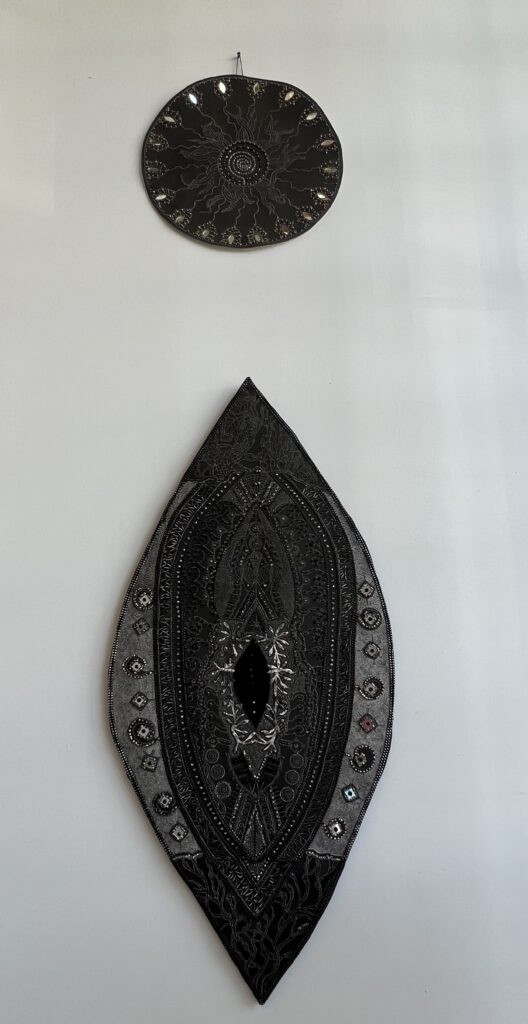
Working in delicate perfection, Marthe Aponte shapes a sphere and a shield that seem like the perfect potential defense for Washington’s figures. Using picote, paper, mirrors, beads, and velvet, her two works here, both “Reflexion/Reflection (Sphere)” and “Shield as Spatial Dialectics, ” also recall and celebrate the vaginal nature of birth, both physical and spiritual .
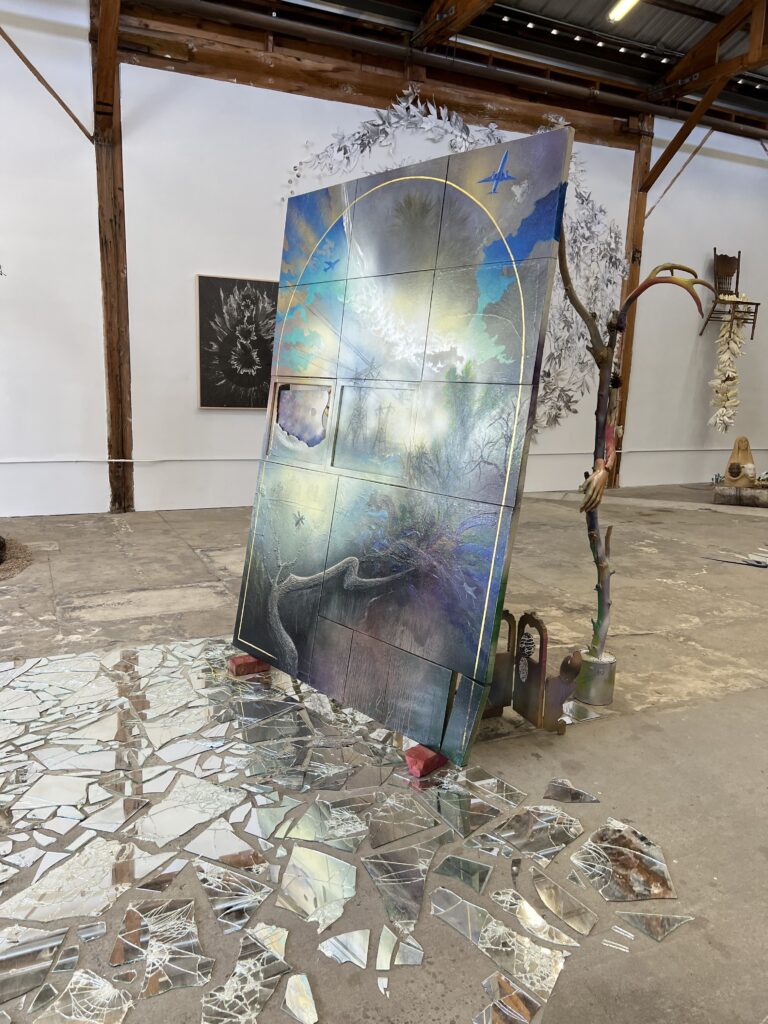
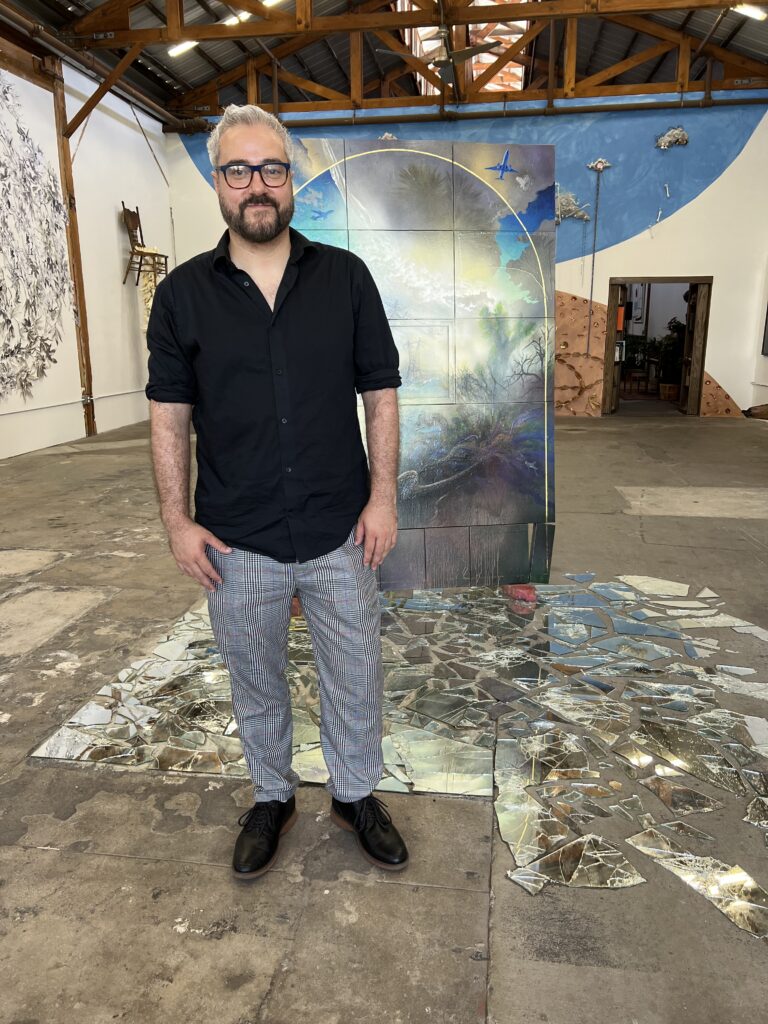
In the center of the gallery, powerfully reflecting Jenn’s back-wall piece as well as Bifulco’s, and others in the gallery, is a spill of mirror pieces that co-curator Vojislav Radovanovic uses like a pool, from which arises an incredible installation that resembles a church window in the heavens. Irridescent, luminous, and a simply vibrating mix of color, his “Painting for a Liminal Sanctum,” is a soaring song of mixed media on canvas. On the backside, wood shapes, plastic, and concrete forms support, both physically and emotionally, this rich glowing rainbow, a vision into an unseen universe embedded with small, delicate drawings within its hypnotic glow. It’s an enormously powerful piece that epitomizes the title and the intent of the exhibition as a whole.
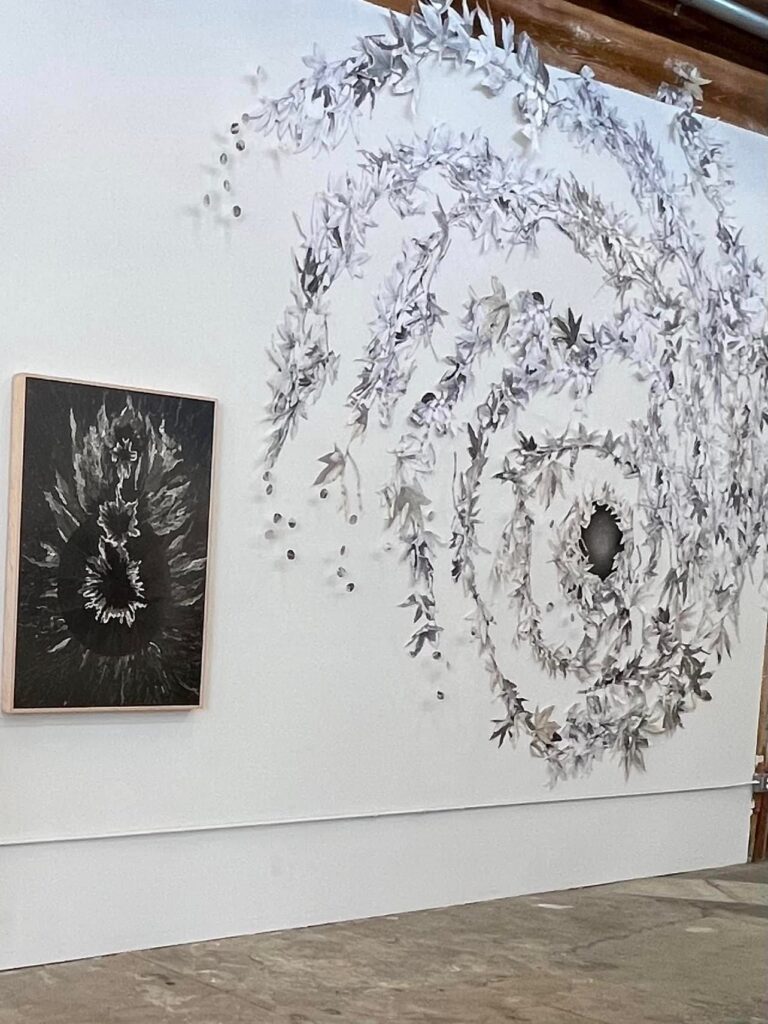
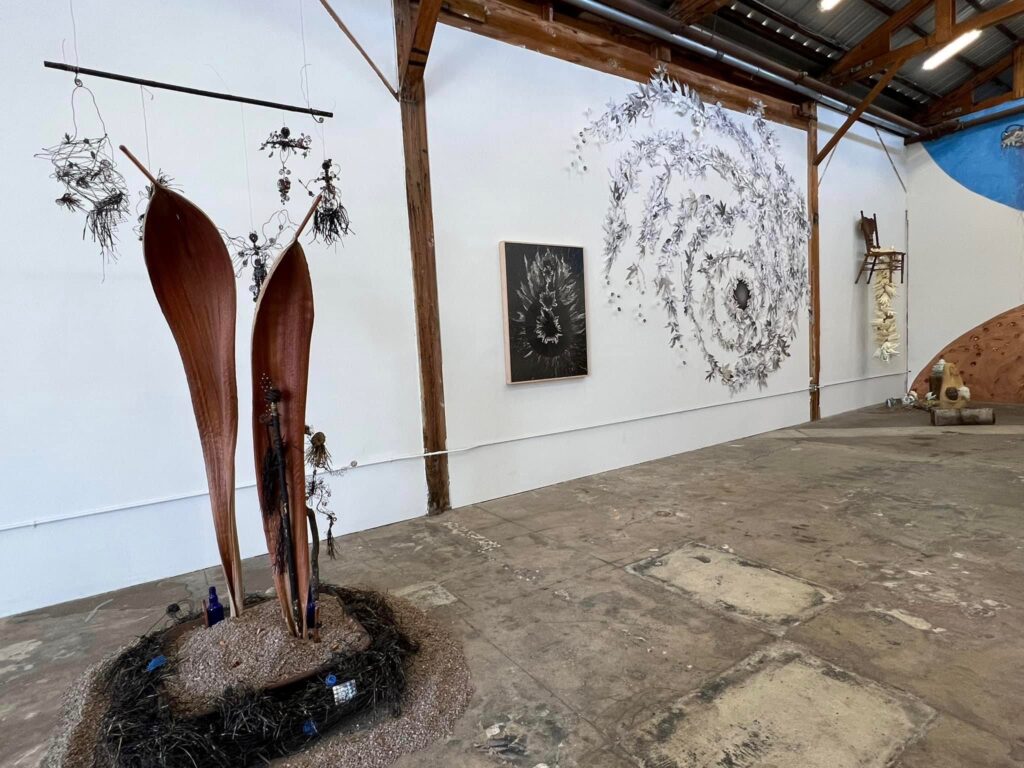
Work by Christine Weir, “Override,” “Progenitor,” and “Emergence No. 2,”are each graphite on clay board, and tie into the heavenly ethereality of Radovanovic’s work and make a beautiful form and color match to Ruane’s work in the exhibition. Weir’s pieces here are their own vortex, their own celestial window, flowers or stars exploding in space.
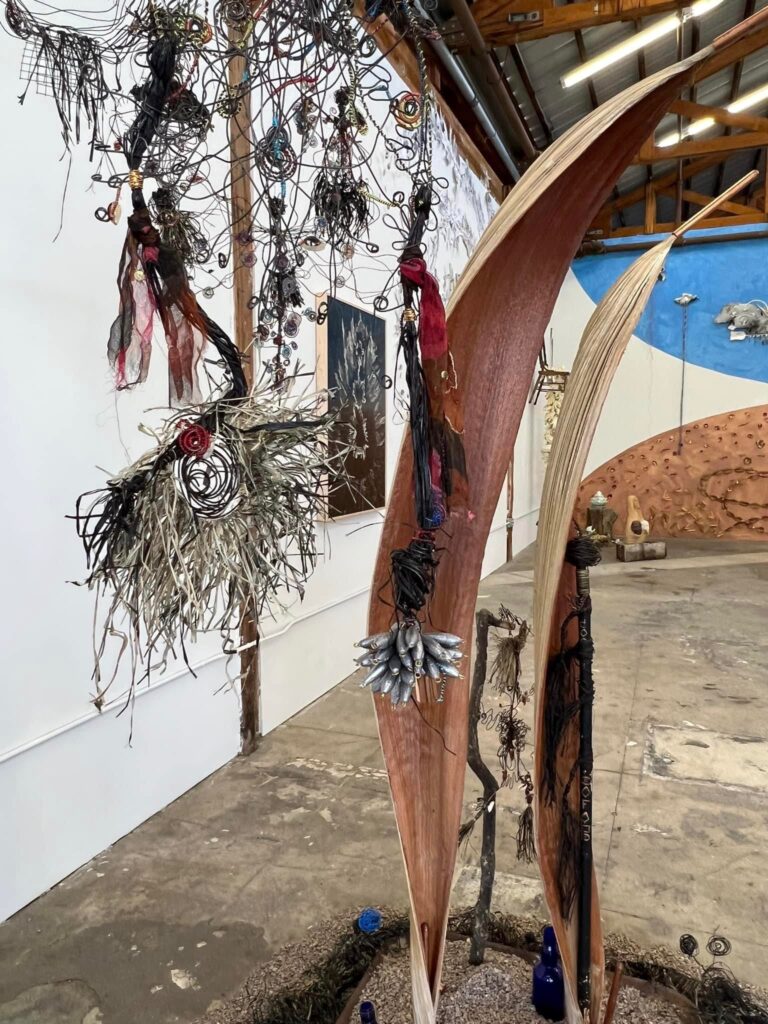
Adrienne DeVine’s mixed media installations and wire art mobiles sing of the earth, if the earth were given wings to spin. Her mobiles are accompanied by rocks and palm leaf sheaths – which speak to Bifulco’s work directly across the gallery. The largest piece is “Serenity in the Garden of Mother Earth and Father Time,” which is surrounded by her other works, including the magical motion of “Dance For Mother Earth.”
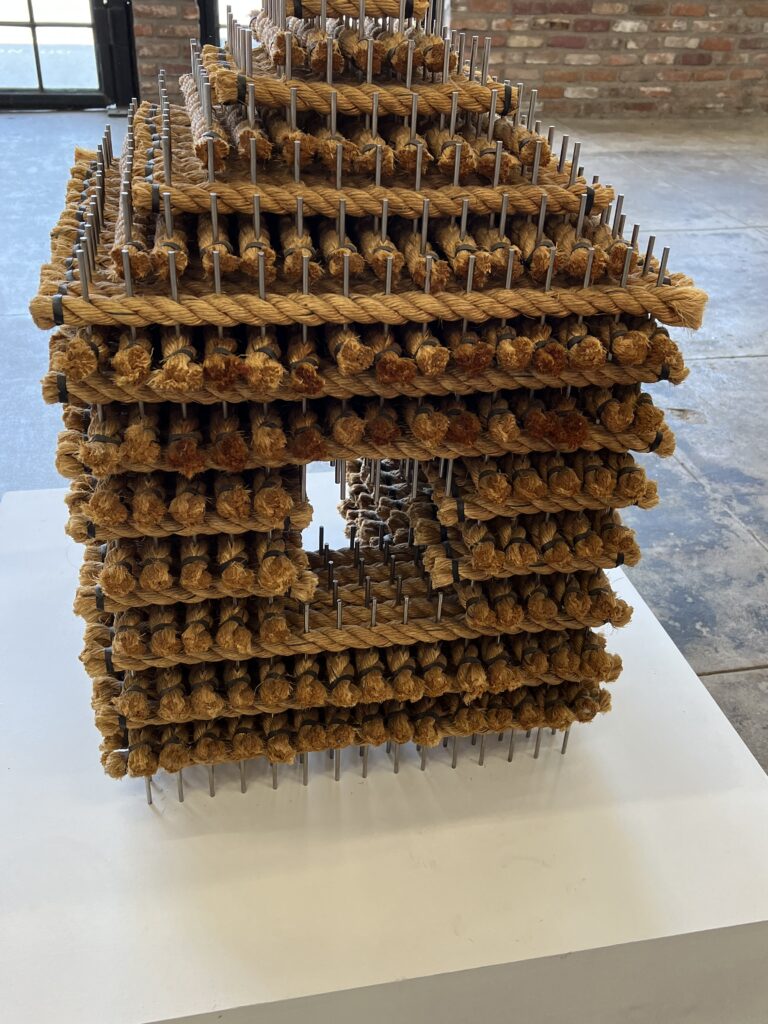
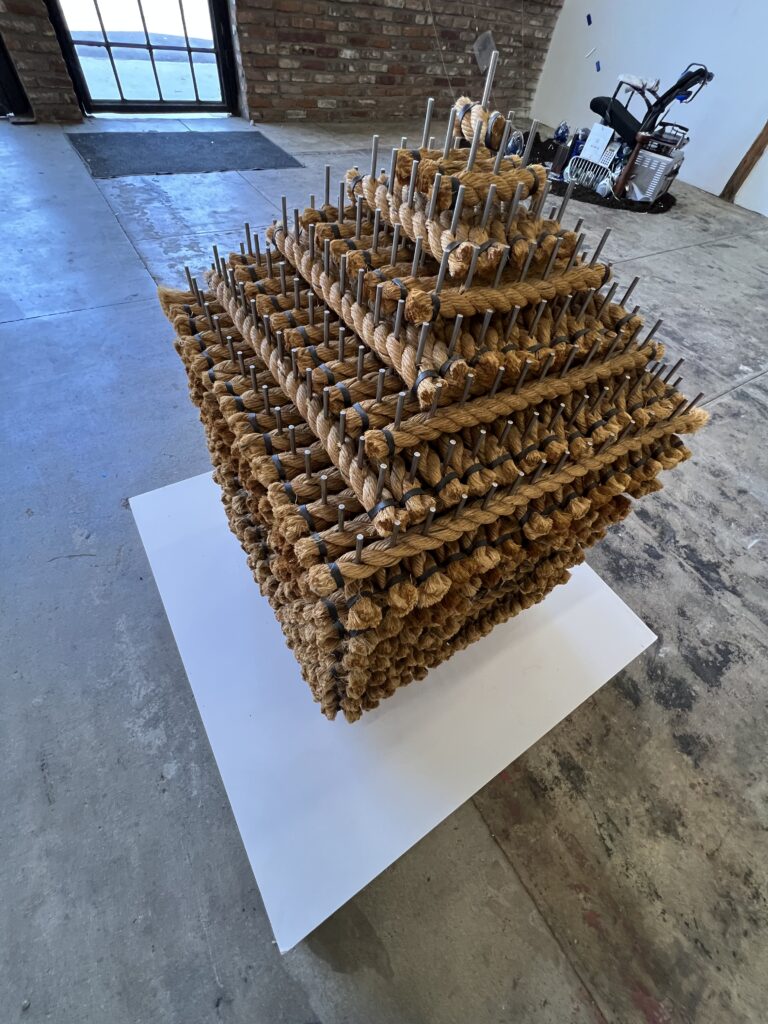
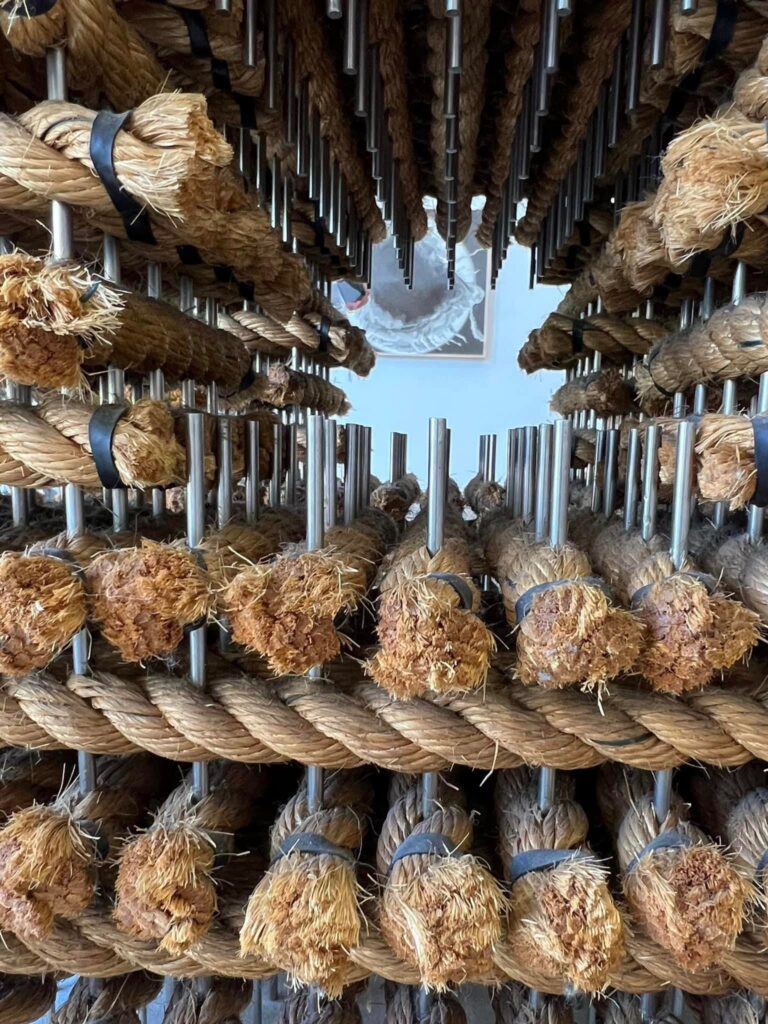
Forming a kind of temple is David Hollen’s precise and absorbing “Ordered Heap,” a geometric gem constructed of hemp rope, stainless steel, and rubber, in earthy beige.
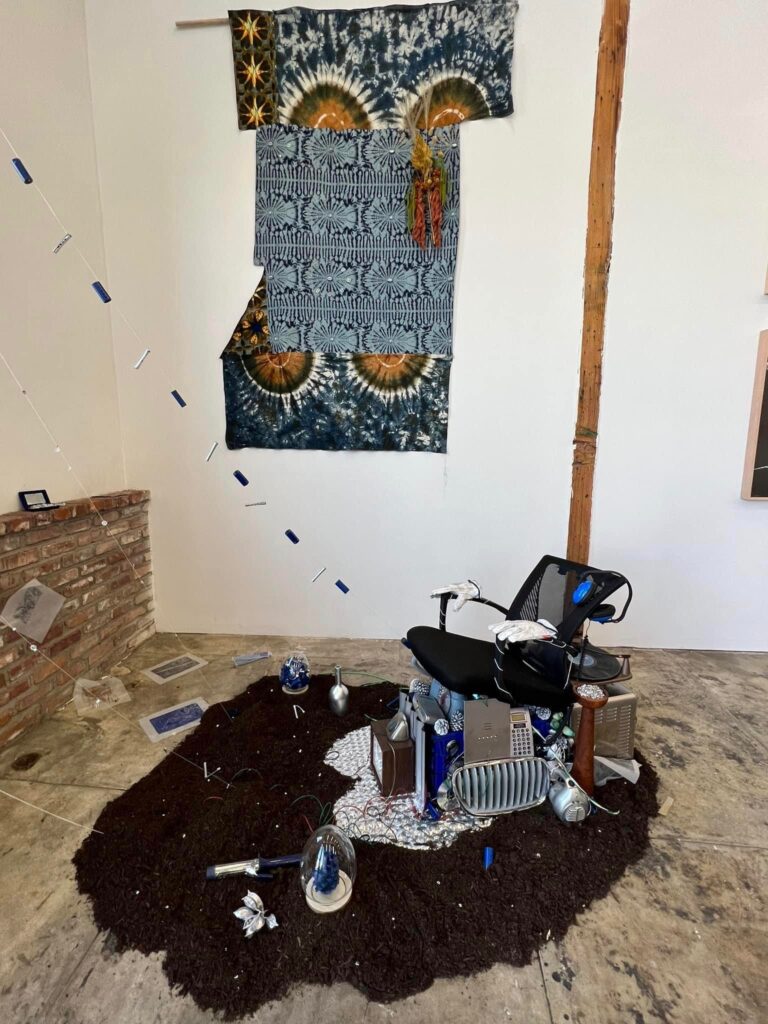
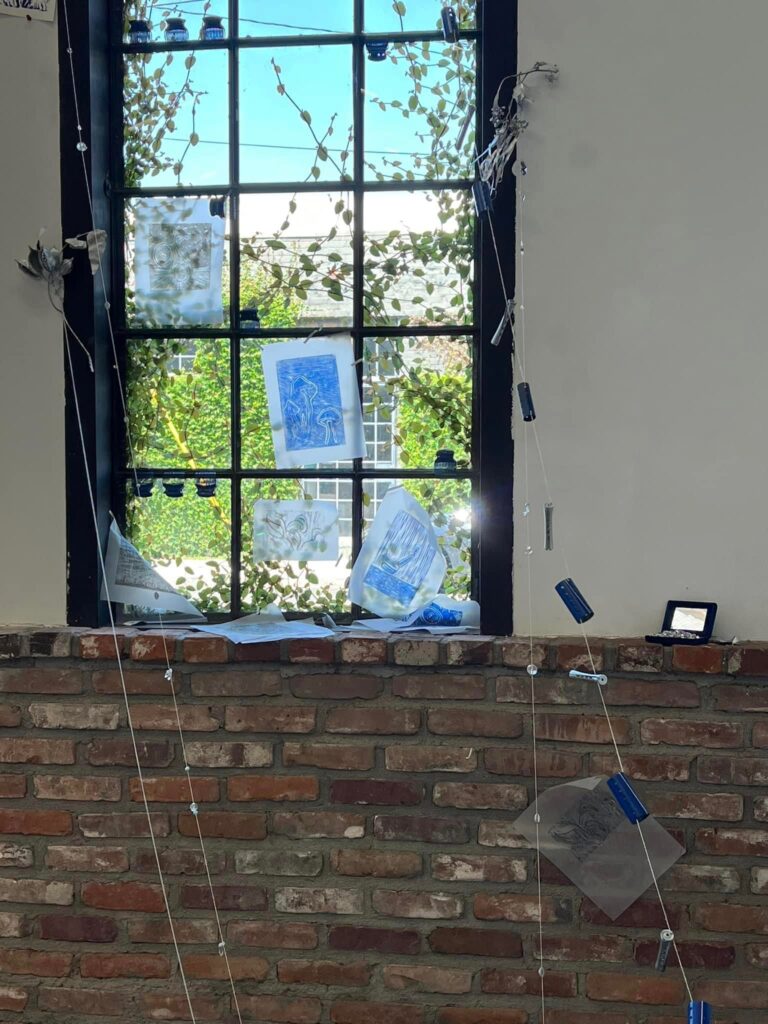
Acting as a kind of curatorial companion to Hollen’s spiritual building is the blue and gold work of Rosalyn Myles who offers both an astral map of fabric and dried flora, individual linocut prints, and a site-specific installation, “Stellar, “which seems to be a space pod ejected from the mother ship, replete with throw-back record player. It is squarely aimed outside the gallery, at a window to a street, and our present-day, pedestrian earth, a world which this viewer found it difficult to re-enter, after spending a wonderful afternoon taking in the celestial wonder of Where Earth Becomes Aether.
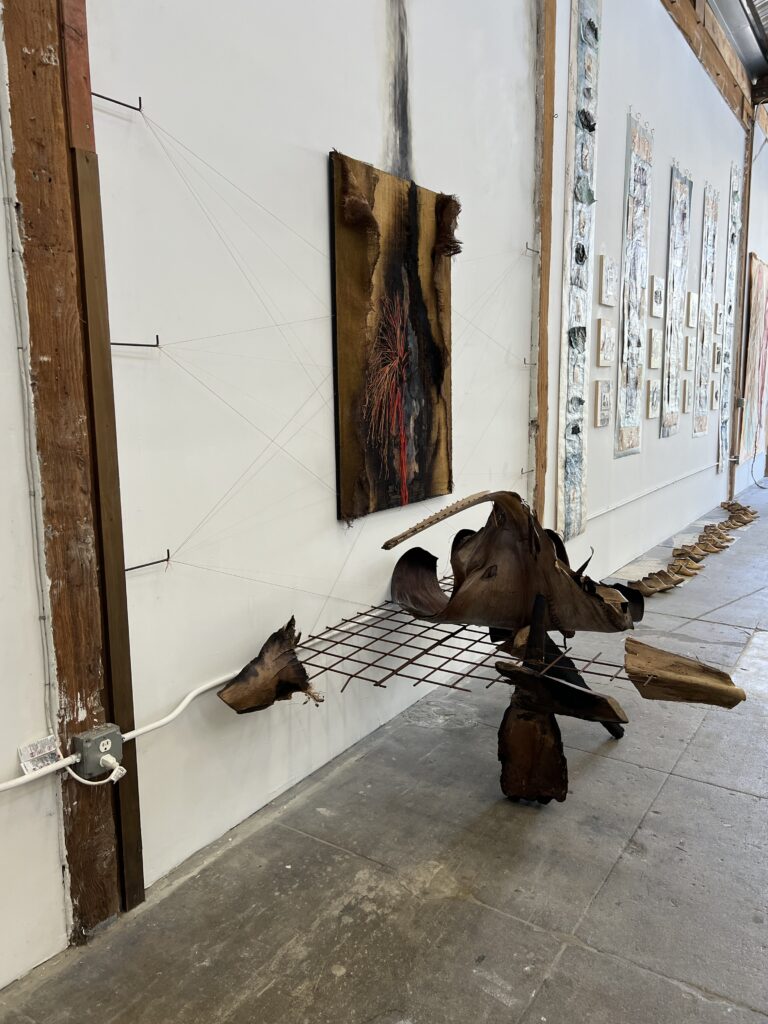
To say don’t miss the exhibition is an understatement. Just go. On June 30th, the gallery will host its closing event, a curator walk-through and film premiere from 6:00 PM 7:30 PM. The film is a visual scape for a music album by Joseph Carrillo entitled “Sanctuary Songs,” and it should serve as a delicate adjunct to this intensely beautiful show.
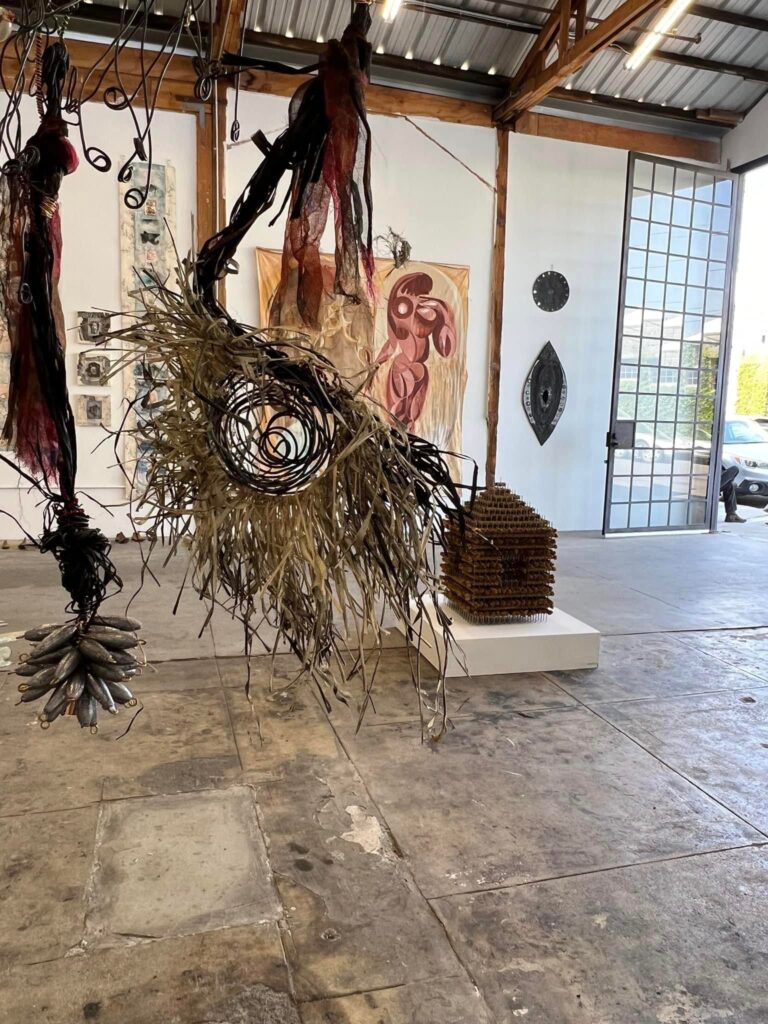
Wonzimer is located at 341-B S Avenue 17, Los Angeles, CA 90031 and is open from 12-7 every day but Monday and Tuesday.
- Genie Davis; photos: Genie Davis



































































































